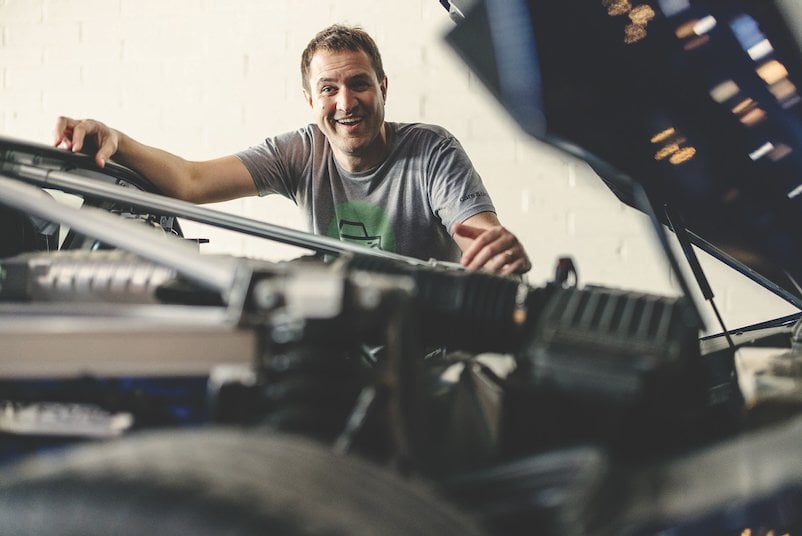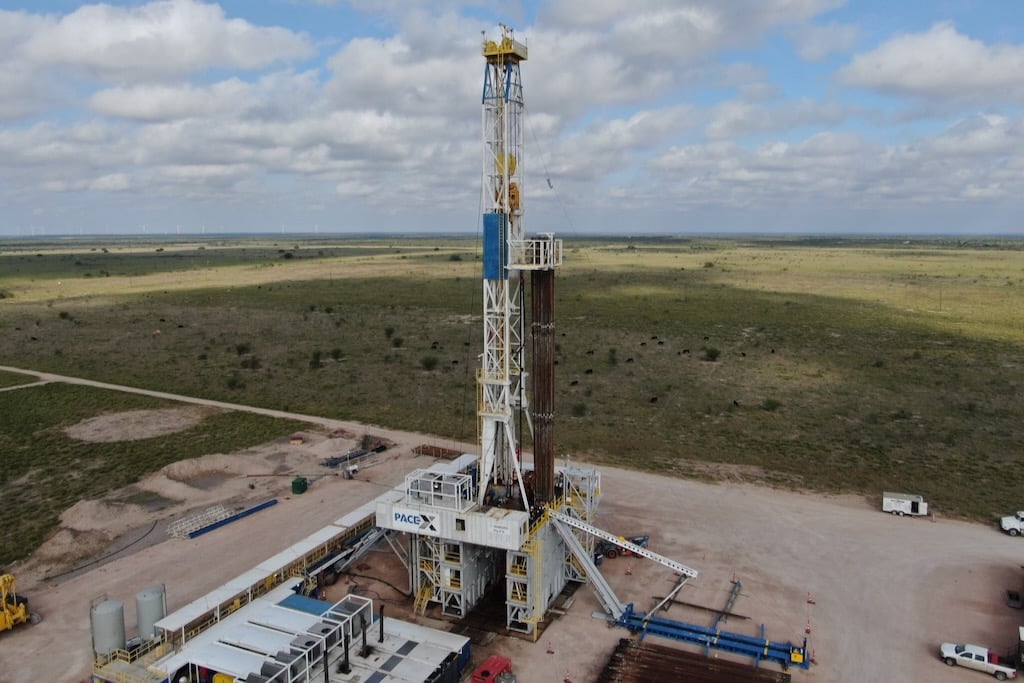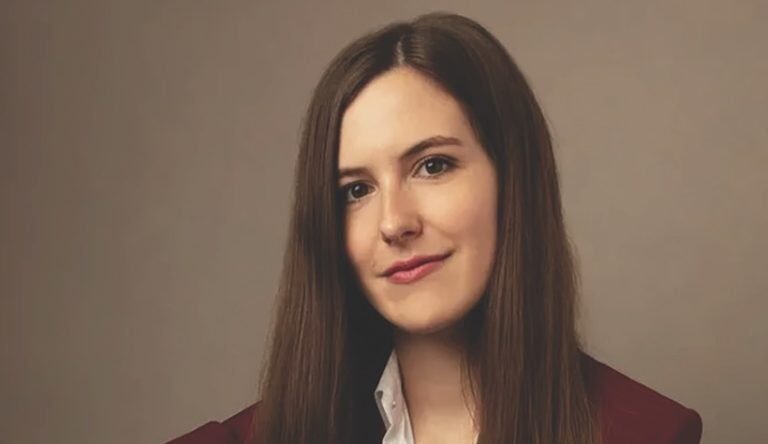Less than a decade ago, the common wisdom around making a living on YouTube was that it was only for creators—or influencers, as they were known back then—with millions of followers and daily views. The money was in sizable pre-roll advertising revenue shares and valuable brand sponsorships. But a global pandemic that forced everyone to live, work, connect, learn, and shop online—not to mention the relentless advances of technology—has upended the economics of YouTube.
“The creator economy saw exponential growth [in the last five years] in both the number of content creators and audience engagement,” says Piotr Wolanski, founder and CEO of Superjoi, an online community hub and monetization platform for creators. “Creators diversified their content and monetization strategies, and there was a surge in platforms offering more direct ways to monetize, such as virtual tipping, subscription models, and exclusive content access.”

Turning Audiences Into Customers
Some of today’s most successful creators are running mainstream, mass-market businesses built out of YouTube fame. And it’s not just branded t-shirts, mugs, and other low-hanging, ancillary revenue fruit.

Automotive journalist, creator, and entrepreneur Doug DeMuro is a prime example of what YouTube’s growth and success look like today. While he has hit it big, his success offers lessons equally valuable for creators with much smaller audiences.
DeMuro spent a good chunk of the early and mid-2010s writing about cars for publications such as Jalopnik and The Truth About Cars and then became the editor of Autotrader.com’s Oversteer blog in 2016.
Simultaneously, he was profiling and reviewing distinctive and quirky cars going back to the 1980s on his YouTube channel, which reached 3.7 million subscribers by 2020. That’s a number significant enough to consider quitting one’s day job, which DeMuro did. That same year, he partnered with entrepreneur Blake Machado to launch Cars & Bids. The auto auction site marries DeMuro’s passion and expertise for a specific automotive niche with the enthusiast fanbase and buyer-seller energy of online marketplaces.
DeMuro has jumped to 4.79 million YouTube followers (as of early February), and Cars & Bids has exceeded $420 million in total car sales, with $180 million in 2023 alone. In January, it received a $37 million investment from The Chernin Group. In November last year, DeMuro signed with Hollywood talent agency WME to represent him and expand brand partnerships, business ventures, and entertainment opportunities.
Specificity and Authenticity Online
As with DeMuro’s YouTube channel, what makes Cars & Bids so compelling is that it targets a particular interest category—enthusiast cars from the 1980s to today—that wasn’t already the focus of another online auction site. “There was eBay and Bring a Trailer, but not for a car auction site focused on more modern cars,” he recalls. “I felt that there was some whitespace there and that maybe there would be room for a player who could do that.”

DeMuro’s authority and personality are interwoven throughout Cars & Bids, which is the bespoke special sauce that you won’t find on more established car auction sites. DeMuro evaluates every car listed and edits a “Doug’s Take” blurb on each one, a personalized and reassuring extra touch that some of his rivals can’t match. And despite now employing 43 people, DeMuro hasn’t changed his YouTube video aesthetic—an enthusiastic and relatable dude in a basic t-shirt, shorts, and white sneakers.
DeMuro covers the history, features, cool factor, and quirks of everything from a Soviet-era 1988 Volga GAZ 24-10 sedan and the original 1994 Ford Explorer SUV to a 2024 McLaren 750S Supercar. He still stars in and produces the same YouTube video reviews and profiles of cars, many of which are up for auction on the site. In addition to live auction talk shows and a podcast, DeMuro has added portrait-mode short clips, or “shorts.” They are increasingly popular on YouTube and TikTok, where they primarily serve as feeder videos back to YouTube and its more sustainable and lucrative advertising revenue share program.
But maybe the most essential reason DeMuro doesn’t mess with the core content that started it all is that it works. “Having the built-in audience is essential because these people showed up on day one,” says DeMuro. Competing auction sites don’t start from that authenticity. Porsche launched Marqued in 2021, an auction site for all brands of classic cars. But the number of cars sold there is minimal. At press time, there was just one auction on Marqued.com versus more than 100 “Ending Soon” auctions on Cars & Bids.
Despite his built-in audience, DeMuro admits that creating an e-commerce business was different from building a YouTube channel and that he was lucky in some respects. Launching the site in 2020, just before the market for used cars exploded during the pandemic, helped. But a crucial factor was finding the right person to build a business with, his Cars & Bids co-founder Blake Machado. “He plugged all of the gaps I had in my abilities and knowledge. His strengths were web design, web development, and the web business. My strengths were the audience and the ability to bring them to the table.”
DeMuro says that finding external revenue sources beyond ads revenue and primary merchandise sales is essential for long-term survival in the creator world.
“It’s easier to turn attention into dollars than dollars into attention,” says DeMuro. “My advice is to just think of something you could do or some way you could take your audience something that they can do, or have a shared interest in, and that they will buy.”

The Rise of the Nichefluencer
DeMuro may be the poster boy for a successful synergistic business built out of a YouTube content operation. However, pursuing a career or side hustle as a creator is less of a pipe dream today than it used to be. While pro poker player Jonathan Little’s 183,000 YouTube subscriber count is nothing shabby, it’s much less than the millions once considered essential. And yet, a consistent pipeline of poker strategy, advice, hand review, talk show episodes, and short videos on YouTube serve as a complementary gateway to sales of Little’s best-selling books on poker and his online poker classes and coaching at pokercoaching.com.

“He’s not huge, and he’s not small,” says Clayton Jacobs, CEO and founder of CreatorDB, an influencer marketing platform offering a suite of analytics, discovery, audience targeting, and brand localization. “But he’s a great example of somebody who set up a career for themselves, and they use their content as a primary distribution source for their paid product.”
More creators are out there, and more are making money, according to a study released late last year by the Keller Advisory Group, an influencer insights and analytics agency. It found 27 million paid creators in the U.S., with the average annual salary for the 11.6 million who work full-time at $179,000 per year. “Macro” creators, defined by Keller as those with 250,000 or more followers, earned an average of $344,000 per year.
Those with the most followers still make the most money. But there are now opportunities for smaller-scale creators focused on niche topics with loyal enthusiast followings—everything from the apparent segments like beauty, gaming, tech, and travel to fishing, beekeeping, online comic books, and B2B topics. These channels with access to specific types of audiences and customers are increasingly sought after by brands and companies looking to reach them.
According to the survey, mid-tier influencers (50,000-250,000 followers) average $129,000 per year, micro-influencers (10,000-50,000) garner $45,000, and nano influencers (10,000 or less) pull in $17,000. More than half (10.4 million) of all creators in the U.S. have fewer than 10,000 followers, putting them squarely in the nano category.
“A huge number of people have discovered that they can dabble in this, that there are channels and outlets for them to communicate and try to build a community around things that interest them personally and that they can find followers with,” says Keller Advisory Group founder and CEO Ed Keller.
Investing Directly in Creators
So, what has changed to allow a diversification of revenue sources for macro creators and enable a broader swathe of content creators to flourish on YouTube? Where are these new revenue streams coming from?
Many answers emerged from the keynotes, panels, and after-conference conversations around “Verified,” a creator-economy topic track held at the most recent Web Summit in Lisbon in November. Today, there is more infrastructure consisting of investors, financing, technology, e-commerce, localization, and business development, making it easier to monetize a YouTube channel with a dedicated audience and room to grow.
According to estimates by Goldman Sachs, today’s $250 billion creator economy will double to $480 billion by 2027. Citi estimates that more than 120 million creators across the globe are generating $60 billion in revenue, which is growing at about 9% per year. Despite a pullback of investment in startups that build tools and communities to help creators grow over the past year, direct investment in creators is still very much alive.
For example, San Francisco-based early-stage venture capital firm Slow Ventures has a Creator Fund that invests up to $5M in exchange for up to 5% of a creator’s future revenue. “They believe, as I do, that the next billion-dollar media companies will be created not by the big [companies] we all know in the media space, but by creators,” said Verified stage host Jim Louderback, the former CEO of VidCon who writes the weekly newsletter “Inside the Creator Economy.”
Rather than take any IP ownership or long-term revenue share, Amsterdam-based Everbloom provides financing and mentorship in the form of an accelerator program. Creators already generating $50-$100K per year in AdSense (Google’s advertising platform) revenue and have at least 1 million followers are eligible to join. The idea is to help creators with predictable monetization streams grow their team, increase production value, optimize distribution, and expand into other mediums and platforms.
“We always joke around the office that we wanted to build the Y Combinator of creators,” says Everbloom CEO Lukas Runte, referring to the Silicon Valley tech accelerator. “Over the last few years, many more people recognize that creators can become larger, thriving businesses that aren’t just monetizing ads and sponsorships but are building full businesses.”

While he already has a solid 2.37 million subscribers on YouTube, Tyler Csatari is using Everbloom funding to raise the quality and quantity of his long- and short-form videos. “I’m also spending some time developing [AI] tools that can help me write scripts and solve creative blocks,” says Csatari. “The funding allows me to spend some time working on these workflow optimizations.”
New Infrastructure for Creators
But you don’t necessarily need the deep pockets of investment firms to grow and build revenue, either. “There’s this growing segment of companies that are focusing on building tools, software, products for creators,” says Nikola Sokolov, CEO and founder of Influencers Club. It operates a platform that helps these companies find and onboard creators in different niches as end customers.
Linktree is one of many “link-in-bio” companies that provide landing pages for creators to feature links to their various social media accounts and commercial endeavors, as well app integrations to help them connect with fans and monetize through sales, services, and more. Kajabi provides a full suite of tools to develop, create, publish, and monetize online courses and membership access. Fourthwall provides a merchandising platform for clothing, accessories, and more and tools to build and run online shops.
Even Patreon has evolved, serving as a multi-medium hub to help podcasters, video creators, artists, musicians, and game developers monetize their content through memberships, exclusive episodes, chat, and other community tools.
Content can take many forms. With a combined 600,000 followers on Instagram and TikTok—and just 6,900 on YouTube—low-cal food creator Kyle Smith made the bulk of his $40,000 per month last year . A former law enforcement officer, Smith, whose Tasty Shreds content chronicles his weight loss and the food he makes to stay slim, is an excellent example of a creator who built a business sustainable enough—not through traffic or views or followers—to enable him to quit his day job.
Regardless of outside revenue sources, YouTube remains the best place to monetize core content, thanks to an established ad revenue share program and the ability to create longer-form content, delivering more advertising proceeds. Follower counts may be easier to build on Instagram and TikTok, but sustaining that audience and monetizing it directly on the platform is harder.
Instagram, for example, has no advertising revenue share program, though it offers basic badges and subscriptions that followers can purchase. The bulk of monetization there is based on brand sponsorships. TikTok caps its compensations, although its still-in-beta Creativity Program aims to compensate creators directly based on traffic, and the app has offered a built-in tip jar feature since 2021.

But TikTok and Instagram are great places to post anyway since the shorts can be used to promote and lead viewers back to a YouTube channel.
With 30,000 YouTube subscribers, Toronto-based finance and travel “micro” creator Reni Odetoyinbo (xoReni, 30.2K subscribers) generates income through a mix of AdSense revenue share, brand partnerships, affiliate marketing, speaking engagements, LinkedIn profile makeovers, financial consulting, Etsy (where she sells a financial tracker), and tips. “My income fluctuates, so it isn’t the same month over month,” Odetoyinbo tells Worth. “Some months I make $15,000 [$11,000 USD] and others I make $60,000 ($45,000 USD).” Though her core content still lives on YouTube, she also posts across other media platforms, including TikTok, Instagram, and LinkedIn, where she has similar micro-level follower numbers.
Bigger Isn’t Always Better on YouTube
Although being a successful creator today is no longer a popularity contest, there’s no easy money here, just more opportunity. According to the Keller study, more than half of all creators—including part-timers and hobbyists—make less than $10,000 annually, and one-third make $1,000-$2,000.
Still, with hard work, nano creators who aren’t bringing mass-market, mass-appeal content to the table already have resources, options, technology, and new markets to make a living. And that’s different from a decade ago.
Jacobs, who’s working on a book about the creator economy, says it’s theoretically possible to make an annual median U.S. income of $55,000 with as few as 6,000 YouTube views a day, through revenue streams from classes and memberships to exclusive content and e-commerce.
“Creators are going to have to hustle to get to the point where they’re making money with those numbers,” says Jacobs. “But if you’re well organized, it can be accomplished.” Interestingly, the nano creator space “represents growth for the future,” per the Keller study, so that it may get easier.
“Creators with huge followings aren’t always the most persuasive,” says Keller. “Kim Kardashian is not like me. Mr Beast is not like me. But someone with a small following who you can follow and may respond to you when you comment, like someone you want to be friends with—that person can be more persuasive because people can relate to them on a more personal level.”
According to Keller, these nano influencers are still largely untapped by brands looking to reach different types of consumers. “I think there’s a huge opportunity [for brands] to literally create a relationship with them that is two-way, where you know who they are, and they know who you are, and you can help them along their journey.” He says the resulting good will should show in creators’ videos.
A platform that seems ripe for a creator boom is LinkedIn. “The rise of the B2B creator,” says Louderback, who himself is a B2B creator on LinkedIn. “Nobody’s doing influencer marketing there at scale, but there’s a real opportunity on the LinkedIn side for brands to come in and work with top creators there.”
According to a recent report by Ogilvy, 75 percent of B2B businesses already work with B2B influencers, with 93 percent planning to use even more of them in the future. Companies such as Intel, HootSuite, Teal, and ZenDesk have already created influencer marketing campaigns with creators on LinkedIn. And because LinkedIn doesn’t run its influencer marketing programs, these partnerships result from direct interfacing between the brands and influencers.
AI’s Superpowers for Creators
The creator economy is no exception regarding opportunities (and pitfalls) made possible by AI. As far as enabling technologies are concerned, however, the most intriguing and valuable applications remain those that offer more streamlined workflow, easier localization, and democratization of creative processes.
AI-powered translation, for example, will help nano and micro creators since they can now own the global audience for a specific niche. Real-time, AI-powered translation and dubbing tools, such as YouTube’s Aloud, are improving daily, and will soon offer voice- and mouth-cloning so that speech looks natural and realistic regardless of the language. “It’s allowing you to create once and deploy across every language,” says Louderback. “Creativity is evenly distributed around the globe.”
Another area where AI will help creators is with editing, which typically takes a long time, yet it’s the core of what drives engagement. DeScript, for instance, allows people to cut video just by editing the text of the associated AI-generated transcript. Opus Clip can automatically identify and clip out interesting nuggets from longer videos. They simplify storyboarding, character generation, and editing, and can also help repurpose existing content into, say, vertical clips that can be put onto TikTok and Instagram for further promotion back to YouTube.
“AI will help turn big creators into superheroes,” Louderback, who uses both DeScript and Opus Clip, said in his “Verified” track, “but emerging creators will suddenly become creators that can have a sustainable future and work with brands and much more.”
Keeping It Real and Human
This is AI’s potential, but the flood of bot-aided and -generated content means that humans will be needed even more. “AI will not steal creator’s jobs,” says Louderback. Rather, AI’s ability to scale creates an opportunity for human creativity. “The new trend is returning to quality and authenticity rather than virality,” he says.
In his “Verified” talk, Stevie Johnson, managing director of influencer marketing agency Disrupt (and a former influencer himself), stressed the increasing importance of authenticity. “Relying on these [AI] tools is going to lead to an overabundance of content, making it ever more difficult for creators to be noticed and for content to hit home,” he said. The solution? Double down on the human. “There is a requirement now to lean into thought-provoking and personality-driven content. Maintaining a human voice is going to be integral.”
Indeed, as the number of creators—nano, micro, or otherwise—gets more crowded with both human- and AI-generated content, the need for personalized, first-person, authentic content will be increasingly important for creators to stand out and gain traction.
The good news for anyone just starting who is intimidated by all those 4K drone shots and slick editing on many a YouTube channel today is that authenticity and voice will continue to trump production value.
“I have so many people who come to me and say: ‘You should do drone shots, you should do music,’” says DeMuro, “but adding complication is not how to make YouTube more successful. That will not give me measurably more views, and it’ll take a lot more time. The goal is to keep it simple.”













